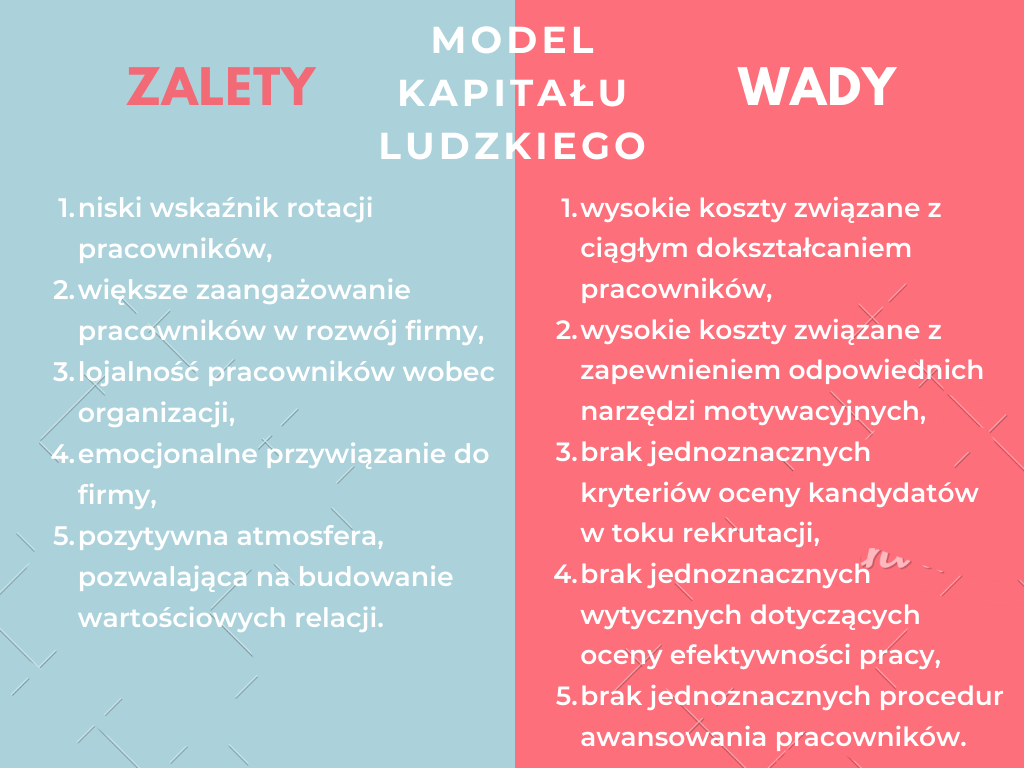Planning human resources, taking care of employees' development and appropriate motivating, assessing and building interpersonal contacts. Here are the most important elements influencing the development of the company and shaping its potential. The company is people, and the selection of the appropriate HR policy model has a direct impact on the effectiveness of managing the entire enterprise.
What are HR policy models?
HR policy models help to effectively implement tasks related to the formation of the company's social potential. Employing the right people, building a structure supporting the achievement of goals and a properly selected incentive policy. These are just some of the elements building a coherent personnel policy of the organization.
HR policy models
Choosing the right HR policy model should be consistent with the mission and vision of the company and ensure that the needs, ambitions and aspirations of all its employees are met.

HR policy models help to indicate the appropriate methods and procedures of human resources management. And although we distinguish two basic types - the sieve model and the human capital model, more and more often we encounter the implementation of a hybrid model that combines both models in different proportions.
Types of personnel policy models
There are two basic models of personnel policy: sieve and human capital. First is based on the assumption that each employee is fully formed and focused on the implementation of a specific action plan. Therefore, it does not feel the need for further development. Therefore, the employer resigns from investing in the development of competences and skills of its employees. It will only focus on providing an appropriate field for competition, which will directly affect the efficiency of employees.
Is your company competitive on the labor market?
The employer branding strategy is a must.
In the course of recruitment, the company selects only candidates who meet the relevant criteria. In order to ultimately hire only "the best of the best" as a result of strict selection. Employees are subject to constant, albeit short-term control. Its purpose is to "screen out" the least effective units. Co-workers have a problem with teamwork and sharing previously acquired knowledge with each other, because they see themselves as direct competition. Such a concept as internal communication it is practically non-existent in their dictionary. Their only motivator is remuneration, depending on the results of work. Therefore, there is often a low sense of loyalty to the company.

Another model of personnel policy - the model of human capital - is based on the assumption that employees have unlimited development opportunities and it is worth investing in expanding the catalog of their competences and skills. This is how the companies where employer branding it's a deliberate strategy. During the recruitment process, candidates with the greatest potential are selected, not necessarily supported by appropriate diplomas and certificates. Ultimately, employees are hired with the right personality, open-minded, non-conflicting, ambitious and willing to cooperate in teamwork. The company provides its employees with appropriate working conditions, a rich catalog of social welfare and the possibility of constant development of competences. Employees willingly share knowledge with each other and do not show any signs of competition towards each other. They are loyal to both themselves and the employer.

Taking into account the advantages and disadvantages of using both models of personnel policy, we observe an increasing popularity of the mixed model, which uses selected elements of both models, e.g. the recruitment system based on the sieve model and the employee motivation system based on the human capital model.
What to consider when choosing a HR policy model?
If you want to choose the most effective HR policy model, you should take into account a number of factors that make up the overall corporate management strategy. The starting point is to identify specific quantitative and qualitative needs in the area of building human resources. The appropriate course of action will also help to indicate the applied policy of filling individual positions and the already functioning system of motivating employees.
personal politics
If the company has a more authoritarian management style, the sieve model will be a much better choice. On the other hand, in companies that are just starting out and do not have a fully formed structure and hierarchy yet, it is worth focusing on the human capital model. Companies implementing a cost-cutting strategy are by definition forced to choose a sieve model, while companies focused on a brand building strategy should choose a human capital model. The sieve model will prove itself in industries where there are much more employees than the available places, as well as in positions characterized by a clear system of assessing the effects of work. In turn, the human capital model is ideal for companies focused on teamwork, which are also prepared to provide their employees with various motivational tools.

As you can see, the goals of the implemented personnel policy are inextricably linked with the general vision of the company. The selection of the appropriate HR policy model should serve the implementation of the company's mission and strategy. The elements of the model must be consistent with the assumptions that were made at the time of starting the business. Also with what the company communicates within public relations. Human resources are the leading resource of any organization and it is the improvement of the effectiveness of human work that largely determines the economic efficiency of the entire organization.

